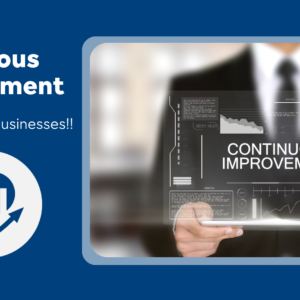In today’s interconnected and ever evolving business landscape, organizations must transform to stay competitive. However, it’s disheartening that most business transformation efforts fail, with a success rate of only one in four. Even those claiming success often struggle to achieve their intended goals and struggle to sustain the gains. In this blog post, we will delve into the drivers of transformation, look at key failure modes and proactive measures to ensure success.
Defining Transformation:
Transformation, as defined by the Oxford Dictionary, is “a marked change in form, nature, or appearance” – a complete shift into something entirely different. This concept is beautifully exemplified by the metamorphosis of an egg into a butterfly. Transformation is irreversible, permanent, and brings about a radical change in direction and function.
Applying this definition to businesses, transformation can be described as “making radical changes in the way a business operates to achieve breakthrough results.”
Drivers of Business Transformation:
- Business Growth: Slow or negative growth, loss of market share, and increased competition can hinder a company from achieving its strategic objectives.
- Enhancing Value: To remain relevant, organizations must continuously strive to enhance the value they deliver. Deploying methods such as Lean Six Sigma, Theory of Constraints, and Supply Chain best practices can transform the business by improving growth, quality, cost, and delivery, while also enhancing Safety and employee morale.
- New/Disruptive Technologies: Outdated processes or advancements in technologies like AI, automation, data analytics, digital marketing/manufacturing, robotics, and vision systems can dramatically change the way businesses operate.
- Changing Landscape: Shifts in socio-political environments, regulations, market disruptions, and other factors may necessitate transformation.
- Customer Dissatisfaction: Poor customer satisfaction results can be a catalyst for transformation.
- Changing Customer Needs: Businesses must stay agile to meet ever-increasing customer demands.
- Company Image: How a company is perceived by customers or the public can drive the need for transformation.
Key Failure Modes:
- Lack of Clarity of Vision: Without a clear and inclusive vision, there is a risk of having a transformation scope that is either too broad or too narrow. It is crucial to set realistic goals aligned with the vision and communicate them effectively, along with compelling reasons for their achievement.
- Inadequate Understanding of Current State: A thorough, fact-based assessment of the business’s current state is necessary to understand the existing situation. This assessment should consider factors such as market share, and potential, competitive landscape, operational performance, trends, financial performance, and more. By studying the current state and by forecasting headwinds, breakthrough strategies can be developed, considering the organization’s potential capability.
- Lack of Structure or Resources: Successful transformation requires proper governance and oversight. Establish a top management-led steering committee to navigate the journey and monitor progress. Assign a capable Chief Transformation Officer as a committee member. Ensure commitment from all committee members and leaders at every level. Assess staffing needs and ensure each role is filled by individuals with the drive to accomplish tasks.
- Failure to Address Resistance to Change: Analyze the forces for and against change using techniques such as force field analysis or transformation readiness assessment. Develop appropriate strategies to overcome resistance and employ effective communication to minimize it.
- Not using a Change Management Model: Use a holistic change management model to guide the organization through the transformation process. Peoplestrat has developed a proprietary change management model that has been successfully implemented with numerous clients.
- Lack of Organizational Alignment: Poor execution of tactics, silo-based efforts, and misalignment with breakthrough objectives can result from inadequate organizational alignment. The Hoshin Kanri (Strategy Deployment) method can successfully deploy strategic objectives by translating them into annual objectives, tactics, and measures. Engage all levels of the organization through exercises like Catch ball to deploy the Tactics and Actions down the organization and to negotiate levels of improvements with leadership. Such an exercise engages all levels of the organization and aligns the transformation strategy with the mission, values, and long-term objectives. This fosters collaboration, sets objectives for all employees, and invests them in achieving strategic goals.
- Poor Leadership: Leadership engagement is critical in any transformation journey. Committed leaders who lead by example, guide the transformation process, and coach/mentor their teams increase the odds of success. Utilize visual management tools like Obeya or War Rooms to track progress. Foster collaboration and teamwork by using “we” instead of “I.”
- Insufficient Employee Engagement: Engage stakeholders and employees at all levels in the transformation process. Hoshin Kanri is an excellent tool to create an emotional connection with organizational objectives. The Catch ball exercise empowers employees to be creative. Clearly define roles and expectations to enhance focus and prevent overlap. Create a work environment that facilitates continuous learning and career advancement. Cultivate a culture that embraces change and encourages innovation.
- Inadequate Communication: Clear, transparent, and effective communication about the reasons for change is essential to ensure everyone is on the same page. Develop a communication plan using a variety of channels to accommodate individual preferences. Examples include newsletters, town hall meetings, departmental meetings, one-on-one sessions, peer meetings, internal social media, emails, videos, webinars, podcasts, kick-off events, games, off-site recognition/team-building events, etc. Communicate with a sense of urgency and employ dramatic techniques to push people out of their comfort zones. A well-executed communication plan wins the hearts and minds of employees, ensuring speed and rigour in implementation.
- Lack of Capability/Expertise: Identify capability gaps and provide training aligned with the transformation roadmap. Training should address changes in employee routines and behaviours. Create an environment where employees can confidently practice new methods. Gauge stress levels and manage them to prevent burnout. Training Within Industry-Job Instructions (TWI-JI) and other methods can rapidly and effectively train employees.
- Failure to Reward Success: Recognition is a powerful motivator. Not tying successes to a rewards and recognition program can hinder progress and lead to lackluster performance. Offer a variety of monetary and non-monetary forms of recognition to accommodate individual needs. Leadership behaviours that motivate employees involved in the transformation foster the adoption of new processes and desired behaviours. Recognize successes, even small ones, as they provide opportunities for appreciation.
- Not Institutionalizing Changes: Standardize new ways of working to prevent regression to old practices. Sustain gains by creating standard work procedures, mistake-proofing mechanisms, control charts, control plans, etc. Train employees on new methods, provide coaching, and establish certification processes.
- Failure to Reflect on Implementation: Conduct reflection sessions at various stages of the implementation journey to assess what went well and what needs improvement. Make course corrections as necessary.
Conclusion: Business transformation is no longer a choice but a necessity for organizations aiming to thrive in a dynamic and competitive business environment. By understanding the potential failure modes, developing a robust strategy, fostering a culture of change, leveraging technology, and continuously evaluating progress, businesses can navigate the transformation journey and unlock new opportunities for growth and success.
About the Author
Deepak Bhaskar
CEO and Principal Consultant

Deepak Bhaskar is the CEO and Principal Consultant of Peoplestrat, an International Management Consulting firm with over 100 years of combined experience in implementing Lean, Six Sigma and other Industry Wide Best Practices. Deepak has over 30 years of strong track record generating extraordinary performance in the Asia Pacific Region. He has managed Operations, Supply Chain, Lean Transformation and Centre of Excellence (CoE) with companies such as DuPont, Henkel, and 3M. He has extensive experience in Greenfield factory setup, factory consolidation, troubled plant turnarounds, and creating a sustainable culture of continuous improvement. Deepak has spent 9 years in Singapore managing the South East Asia region.


